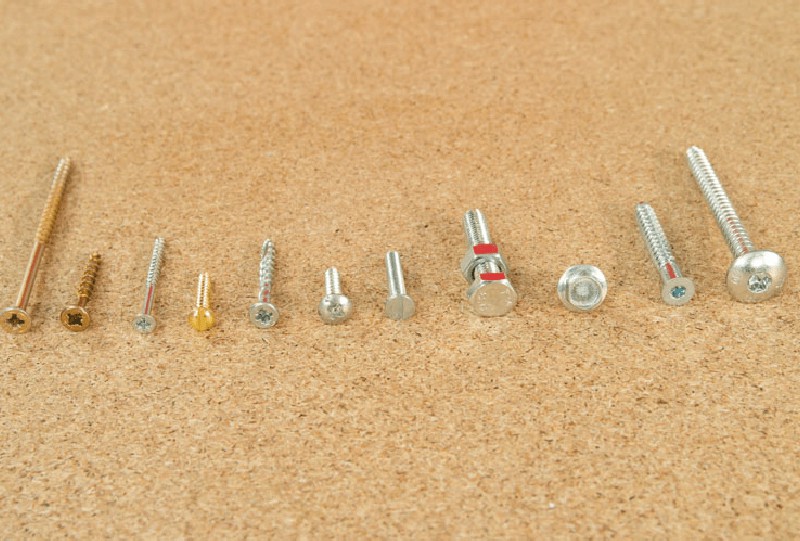Types of screws: characteristics and uses
When we talk about DIY, one of the most essential elements are screws. Although at first glance they may seem small and insignificant, they are key in most projects. Knowing the different types of screws and their characteristics will help you choose the right one for each task, which guarantees better results and greater durability in your work.

Parts of a screw
Before exploring the different types of screws, it is important to know their main parts, as this will allow you to identify their differences:
- Head: this is the top part of the screw, where the screwdriver or wrench is inserted to tighten it.
- Shank: this is the elongated part that includes the thread. The smooth part of this is called the shank or neck.
- Tip: this is the end of the screw, which facilitates penetration into the material.
- Pitch: refers to the distance between the threads of the thread.
Types of screws according to the material
The material from which a screw is made determines its suitability for different surfaces and conditions. These are some of the most common materials:
- Steel screws with a bichromate or zinc finish: these are widely used indoors due to their moderate corrosion resistance.
- Stainless steel screws: perfect for outdoors and coastal areas, as they withstand extreme temperature and humidity conditions without rusting.
- Brass screws: very strong and decorative, they are commonly used in woodwork where the screw is visible.
Types of screws according to the head
The shape of a screw's head influences both its ease of use and its ability to adjust and fix. Among the most common are:
- Slotted and cruciform head screws: the most common in everyday use. Slotted heads are screwed in with a flat screwdriver, while cruciform heads require a Phillips screwdriver.
- Hexagon or square head screws: these are ideal for tasks that require high torque, such as fastening parts. Hexagon head screws with flange do not need a washer.
- Allen screws: these have a cylindrical head with a hexagon socket, and require an Allen key for use. They are perfect for joints that require a lot of force.
- Torx screws: ideal for use with electric screwdrivers, as their design increases the contact surface with the screwdriver tip, allowing for high torque.
Types of screws according to their use
Depending on the material you are working with, you will need a specific type of screw to ensure a good fixation:
- Wood screws: these have a wide pitch thread, allowing for better fixation in soft materials such as wood or plastic.
- Metric thread metal screws: Designed for harder materials, these have a finer pitch thread, ensuring a solid hold.
- Plasterboard screws: Since plasterboard is a soft material, these screws typically have a sharp point for easy penetration and a coarse pitch thread to avoid exerting too much pressure.
Conclusion
As you've seen, choosing the right screw is critical to ensuring the success of your DIY project. By knowing the different types of screws and their applications, you'll be able to select the one that best suits the needs of your job, ensuring a long-lasting and secure fix. Next time you're faced with a project, make sure you have the perfect screw on hand for the task.





Our customers trust us
Opinions of our clients
Receive our news